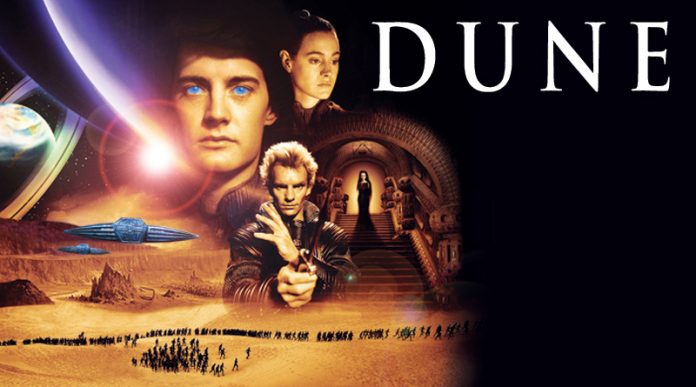David Lynch’s Dune is a very flawed film, and yet it has grown a cult following. To figure out why, we select 50 of the film’s narrative shortcomings and try to come up with reasons why they are actually endearing.
Frank Herbert’s classic science fiction novel Dune has been notoriously difficult to translate to the big screen. When David Lynch agreed to direct a feature film adaptation in the early 1980’s, he faced an uphill battle to say the least. In addition to the complexities associated with the source material, the film was given a large budget in order to try to be competitive with Star Wars in the blockbuster sci-fi realm. Suffice to say, expectations were high.
In the face of such adversity, including the always detrimental impact of unwelcome studio and financier intervention, 1984’s Dune did not have a satisfactory release into theaters. The film was a box-office disaster and was utterly crushed by critics. And it wasn’t just a matter of the film being too far ahead of its time for audiences to properly enjoy it, the film was bad in almost all regards. Unsurprisingly, Lynch didn’t want anything to do with the film because he felt that the final version didn’t represent his vision.
But for everything that is wrong with Lynch’s Dune, it has grown a strong and dedicated following. These fans have embraced the blemishes of the film not as demerits, but as strengths. It is a film that is so wild and out of control you can’t help but be at least a little bit impressed by its ambition and uniqueness. Instead of dwelling over what it could have been, you just have to appreciate the untamed spectacle of what it is. What’s certain about 1984’s Dune is that you will never see another film like it.
And to prove to you just how such a troubled film could actually be considered enjoyable, Jordan and I decided to list 50 of the differences between the book and the movie and try our best to frame them with a positive spin. We put ourselves into the shoes of filmmakers who are trying to pitch this monstrosity to skeptical audiences who have better ways to spend 2 hours of their time. This should be interesting…
(in attempted chronological order of the film…)
***NOTE – This article contains spoilers for David Lynch’s 1984 film, Dune, as well as Frank Herbert’s original novel. Although we don’t directly discuss the new 2021 Dune, some aspects of what we discuss may have correlation with the new film.**
- The weird fading-in-and-out introduction at the beginning of the film by Princess Irulan.
Conext: While Irulan’s writings are provided as context in the novel, she never becomes a traditional narrator like she does in the film.
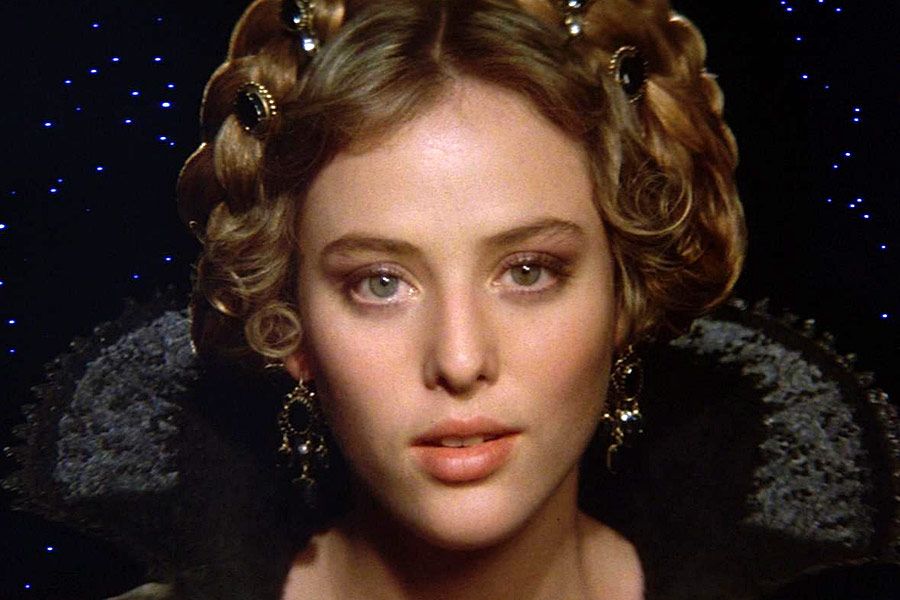
Garrett: Compared with the rest of the film, the beginning is the only part where things are actually explained. It’s like a siren for people who aren’t familiar with the book.
Also, I wanted to point out I am going to discuss Lynch’s film from the perspective of the theatrical release. I know the extended editions provide a little bit more story, but I am approaching this article from the perspective of someone who has only seen the bare-bones original version. So, obviously in the 3-hour TV cut, this opening scene is very different.
Jordan: Kicking off your film with a big ‘ol exposition dump is normally not a great idea. In the case of Dune, however, it serves a pretty important purpose. Hell, the extended version of the film dramatically expands on this opening, delving into the Butlerian Jihad against machines, and the history leading up to the events in the film. It’s a crash course in the lore you need. This makes it much more accessible for those with no knowledge of the book(s), even if it feels like a lot of info at once.
- The film’s opening scene takes place on Kaitain at the emperor’s dog-infested palace, which doesn’t happen in the book and is only briefly mentioned.
Garrett: Lots of the scheming in the book happens behind the scenes, so Lynch changed things up by bringing that scheming front and center in the very first scene. It certainly establishes the motivation of the antagonists, even if that doesn’t happen until later on in the book. I also love the way it just casually throws out all these references to other aspects of Dune which non-readers will have no comprehension of.
Jordan: I always loved seeing Kaitain in this movie. The idea of Kaitain and the Padishah Emperor is such an important one to the original novel, that it’s crazy we never actually visit it in the books (not for a LONG time anyway). As such I thought it was neat to start there, where the intrigue truly begins, and get a chance to experience that aspect. Not every choice made in this adaptation is the right one, but this was a smart change.
- The first scene features a Guild Navigator, which is a creature mentioned but never really described until later sequels.
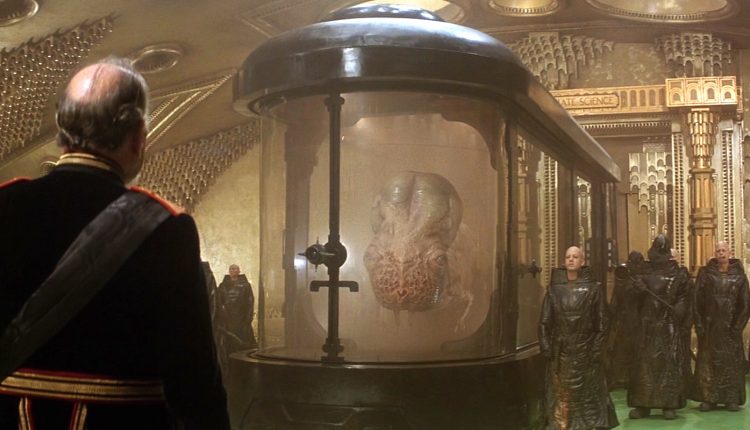
Garrett: I feel like David Lynch’s entire reasoning for wanting to make Dune is so he could feature a grotesque Guild Navigator in the film. He’s so interested in the weird and mutated and I feel like because of that this is one of the best scenes in the entire film.
Jordan: I think what’s most interesting/cool about seeing the Navigators is that Lynch’s version of them pretty much forms the basis of their descriptions in the future. In the early novels, Herbert described the Navigators in the vaguest of terms, making it clear they were no longer human, but not giving them much else to go on.
Following the release of this film, however, Frank Herbert liked the interpretation so much, that he incorporated elements of this design into his descriptions of Navigators in Chapterhouse: Dune. Since then, just about every other depiction (including the newer novels from Brian Herbert and Kevin J. Anderson) have used the Lynch model as a template.
- The emperor sends Reverend Mother Gaius Helen Mohiam to Caladan to find out about Paul Atreides.
Context: In the book, the first chapter is Mohiam’s visit to Caladan, and it occurs because of her own concern, and is not motivated by the Emperor or the Guild like it is in the film.
Garrett: The film has to establish Mohiam as an adversary, but it doesn’t really have time to explain who the Bene Gesserit are and their distrust of Paul, so it just lumps her into the Emperor’s ploy in a generic “witch” role.
Jordan: Yeah, this always seemed like such a strange choice to me, though not necessarily a bad one. In the book, Mohiam is “bad” but not in any specific way. Moreso, you get the feeling she’ll do whatever is necessary to complete the Sisterhood’s goals, which oftentimes puts her at odds with Paul/Jessica. I like how the film streamlined this to be a more antagonistic role, even if it loses some of the more enjoyable subtext.
- The second scene in the film is a consolidation of the rest of the first chapter of the book, and does not introduce that traitor Dr. Yueh.
Garrett: This scene streamlines the book, the film would need as much of that as it could get. Also, it sets the tone for how the rest of the film would approach the intricacy of the book; plowing through it like a bulldozer. Get used to it.
Jordan: This is actually one of my favorite scenes in the movie. While it certainly streamlines some elements, this moment still feels like the most accurate interpretation of the scene from the book. It hits all the right beats, has a great back and forth with the characters, and is still what I picture in my head when I re-read the book.
- Gurney Halleck has his baliset in the second scene and says he is packing it for the trip to Arrakis, but he never plays it and it is never seen in the theatrical version again 🙁
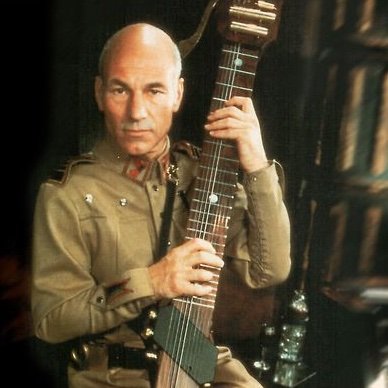
Garrett: It’s a throwaway comment to keep fans of the book happy.
Jordan: I don’t think anyone really knows how to handle the “Troubador Warrior” on the big screen when it comes to the musical aspect of Gurney. Hell, even the new film barely makes mention of his singing ability. But yeah, it’s still a nice nod for fans of the books.
- The Atreides are formidable in combat because they have “Weirding Modules” which are just guns that shoot sound.
Context: The Weirding Modules take their name from the Weirding Way, which is a form of movement used in physical combat in the book. It was developed by the Bene Gesserit and it was taught to the Fremen by Jessica later on.
Garrett: It’s easier to explain “gun that turns words into death” than it is “an ancient form of body control heavily influenced by Prana-bindu physical and psychological training developed by the Bene Gesserit which allows for increased agility and speed in hand-to-hand combat”. Yes, this is a future where soldiers can’t shoot lasers at each other because if the lasers hit the personal shield generator it causes a significant explosion which would kill everyone. Of course, that really isn’t explained in the film (because it doesn’t have time to!), so it’s easier to just go with the sound-guns.
Jordan: Obviously this is one of the biggest changes made to the story, and a big source of fans’ problems with it. That said…if you want to appeal to non-hardcore science fiction fans and quickly explain away esoteric ideas, this isn’t a bad way of doing it. While it takes away from some of what makes the Bene Gesserit abilities unique, it’s a lot easy for casual movie-goers to understand.
- Glowglobes are pointless. Every interior shot is extremely dark.
Garrett: They are high-efficiency glowglobes. Dune has eco-friendly undertones, and so the Atreides are all about saving energy in order to reduce carbon emissions. It’s something you just have to live with if you don’t want another Arrakis.
Jordan: Look, if you want those pretty blue eyes to shine through, you gotta keep things darker, right?
- The Pug!
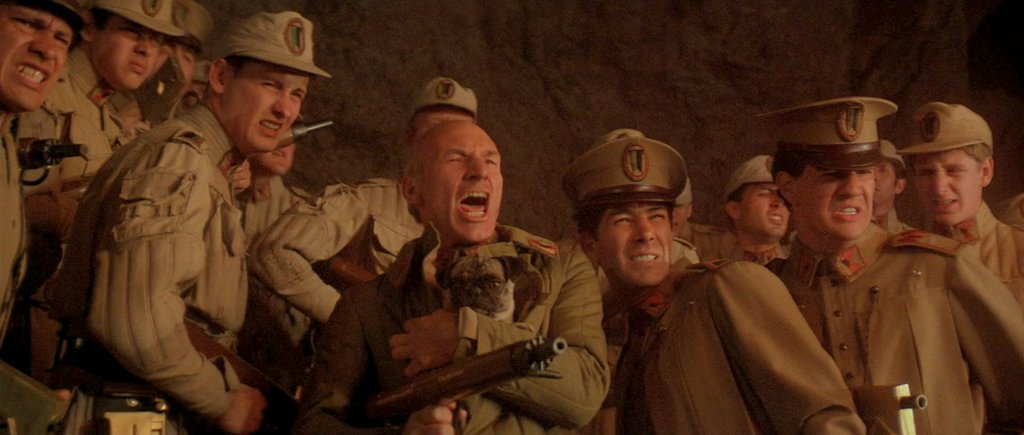
Garrett: Lynch uses pets as a sign of wealth. The Atreides carry around pugs, the emperor has them, the Baron has a cat-rat-milking machine (?). It reminds me of those renaissance era paintings that always have dogs in them. I love how Gurney’s Baliset is essentially replaced by the pug later on in the film. He isn’t lugging around his precious instrument, he’s carrying Duke Leto’s pug. Maybe he’s doing it to honor Leto. Indeed, dogs were famously painted because they represented loyalty, and so maybe the pug represents Gurney’s unwavering loyalty.
But you have to wonder how well a pug could live in the middle of the deserts of Arrakis. I feel like the Fremen would be against pets, and would have killed it for its water. Still, lots of people love pugs, and this may be one of the most famous films to feature pugs.
Jordan: To be honest, I had completely forgotten just how many dogs appeared in Lynch’s Dune movie until I rewatched it for this article. It’s kinda bizarre. I mean, there are a couple mentions of animals in the books, but nothing on the scale depicted in this film. But hey, dogs are cool and it’s hard to deny the visual of Patrick Stewart running through a hellish battle carrying a Pug.
- The film spends entire minutes trying to depict the Guild Navigator folding space. Entire minutes!
Garrett: This is something that no humans are ever allowed to watch. He’s creating art with the cosmos. So even if you’re bored just keep in mind how much a privilege it is for you to watch this happen. In fact, it seems boring because you can’t even comprehend what is happening with your non-mutated human brain.
Jordan: It’s crazy that, in a film which does a WHOLE lot to streamline the story of Dune, Lynch spends quite a bit of runtime on something we never actually see depicted in the book. Still, there’s no denying that it’s a cool visual for Sci-Fi fans to enjoy, even as you understand that it makes no damn sense.
- Giedi Prime is an industrial wasteland, and the Harkonnens all have red hair?
Garrett: It just makes me think of South Park, and this episode:
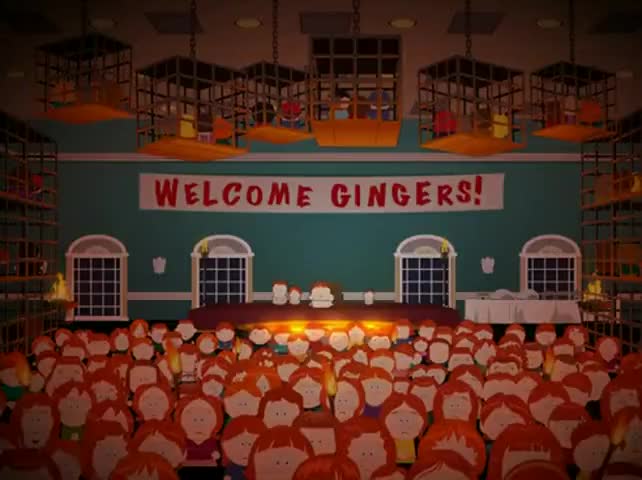
Jordan: The depiction of the Harkonnens, and their homeworld, is among the most book accurate thing Lynch does in his film. Giedi Prime is a cold, harsh planet, with a downtrodden populace forced to work constantly for their dastardly overlords. Lynch actually goes a bit further in showcasing the industrial wasteland than the book, but it certainly gets the point across.
Also, yeah, all the Harkonenns are red-headed. It’s one of the distinctions given to them in Herbert’s novel, so at least there’s that.
- Baron Harkonnen has really bad acne?
Garrett: Lynch wanted a villain that would easily disgust the audience, and, well, he got that. When you have such a powerful protagonist, he needs an antagonist with no redeeming qualities whatsoever. However, many people have claimed that the Baron’s appearance was meant to evoke the AIDS epidemic at that time. If that is true, it would represent a very hateful and unfortunate creative choice.
Jordan: How do you know when a villain is bad? When they look bad! They don’t look much worse than Baron Harkonnen in Lynch’s film, which was always an odd choice. On top of the generally gross idea of deformity equating to evil, it really doesn’t factor into the story aside from this introduction. I’m glad that all adaptations since have completely done away with this depiction. So maybe it’s good, in that it showed others what NOT to do.
- Duncan Idaho says “Hi” to Paul once the Atreidis arrive on Arrakis, and then promptly dies a couple scenes later concluding his very valuable contribution to the film.
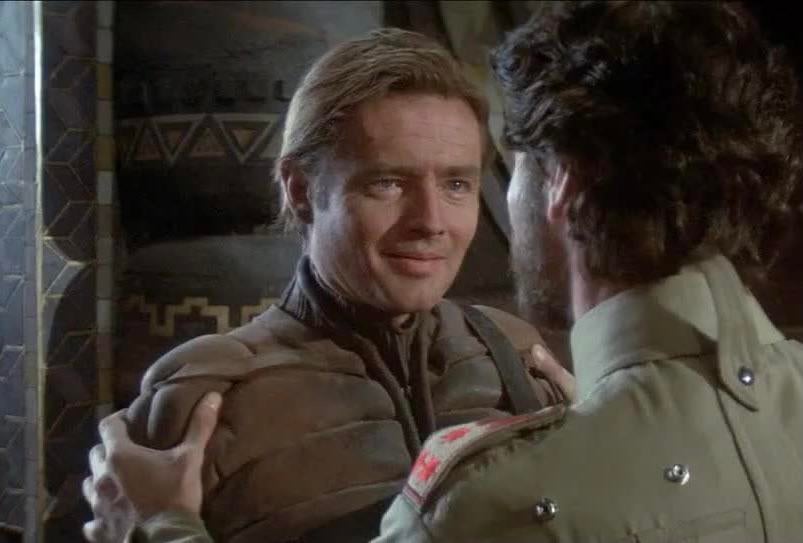
Garrett: Duncan Idaho is too good a character to waste on this movie, so they decided to get rid of him quickly.
Jordan: Oh sweet Duncan, you were far too good for this world. Knowing he’d be killed off rather early in the story, Lynch rightfully decided to not get fans all riled up over one of the best/most iconic characters in the Dune saga….
- The movie doesn’t include any of the scenes at the palace on Arrakis leading up to the Harkonnen attack.
Garrett: We don’t get to see drunk Duncan Idaho, a dinner with all the rich people on Arrakis, and Lady Jessica’s loyalty is never questioned. That should make things easier to understand, right? Worldbuilding is for chumps.
Jordan: When you think of Dune, you tend to think of the Worms and the Fremen. Obviously the story is about MUCH more than that, but Lynch cuts right to the heart of what people wanted to see and puts the focus almost entirely on the desert part of the story.
- Paul saves Shadout Mapes from the hunter-seeker, and then she is dead in the next scene anyway. So much for that life-debt she owed him.
Garrett: Just one of the many casualties of the book-to-film translation. The only reason for her appearance in the film is fan service, I don’t feel like she advances the plot at all. But this movie trudges on as if it isn’t concerned about the massive amount of story it has to compress, so in that regard you have to just tip your hat to the attempt at including as much of the book as possible at the expense of stitching together a coherent, or at least sensible, plot.
Jordan: I don’t know that I can ever be upset about seeing Linda Hunt in Dune. Even if it amounts to nothing, it’s still LINDA HUNT.
- The only scene in the movie where the scarcity of water is brought up, besides the scene with Dr. Kynes, is a quick clip of a commander filling up water bottles for his troops.
Garrett: It takes forever to fill up one bottle. The entire army has to use that one source for their drinking water. The Harkonnens set that up on purpose. Half the army was still trying to get their canteens filled when the palace was attacked, which explains how easy it was to capture it.
Jordan: This is one of those things where the extended version of the movie does things a bit better. We get to see some more examples of water being scarce, including the iconic scene between Stilgar and Duke Leto where the Fremen leader spits as a sign of respect.
- Why are the stillsuits black? Wouldn’t that be the worst color, and prevent camouflage in the orange desert. Also, why don’t they cover the head?
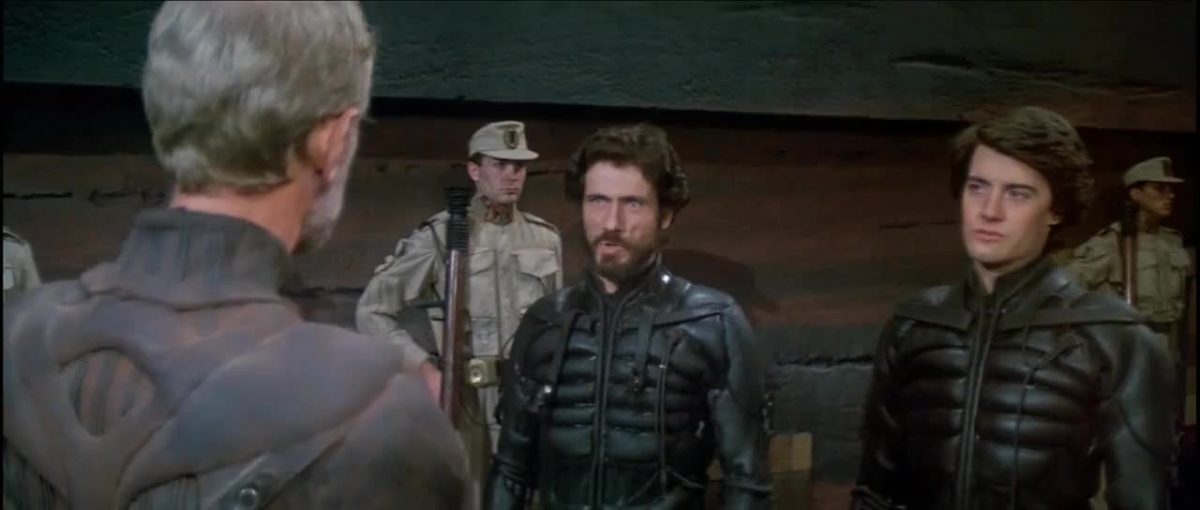
Garrett: You forget, this is the distant future. They have advanced technology that we cannot explain. That includes the materials they use to manufacture their clothing. Just because they are black doesn’t mean they aren’t a high-tech material which has been chosen for a good reason. And a lack of head coverings would just obscure the actors’ pretty faces. This IS a movie after all.
Jordan: You don’t cast Kyle MacLachlan and the gorgeous Francesca Annis only to cover up their faces! Lynch did us a favor here. Also, black is freaking cool and in the 80s, black tech was the pinnacle of Sci-Fi aesthetic.
- The movie largely forgoes the efforts of Duke Leto to earn the trust of the Fremen. This mostly occurs in one scene where Leto rescues the crew of the spice harvester under attack by the worm, which also happens in the book.
Garrett: Important to note here that Leto saves David Lynch from the worm, thereby earning infinite trust from the Fremen, who are actually under the command of Lynch-as-movie-director if you think about it. It’s so meta….
Jordan: Much like the scene between Reverend Mother Mohiam and Paul, Leto’s rescue of the spice crew is a solid adaptation from the book. When Lynch actually picks stuff out of the book, he does a pretty phenomenal job doing it.
- The Sardaukar are not all that fearsome. And the Harkonnen troops are just wearing hazmat suits for some reason. In fact, maybe the Sardaukar are so ineffective because they have to wear these ridiculous uniforms in order to disguise themselves.
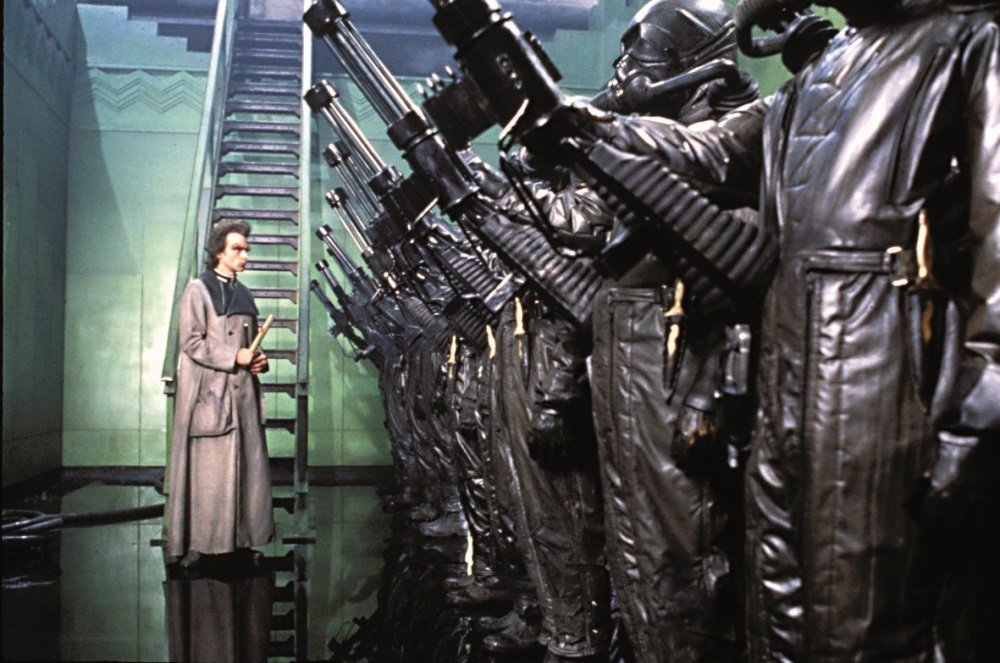
Garrett: The Atreides uniforms are retro, but still identifiable as army uniforms. The Harkonnens are different. They don’t play by the rules. Plus their troops are impervious to chemical attack in those suits. They can also go underwater. That’s useful on ocean planets. They’re just trying to be prepared.
Jordan: It’s fun to know that Lynch was ahead of the times, providing the definitive look for Among Us all those decades ago.
- Part of Yueh’s sabotage is destroying the Weirding Modules, afterwhich all of the careful planning by House Atreides to avoid a Harkonnen sneak attack goes out the window.
Garrett: If it wasn’t for Yueh, the Atreides might have actually held off the Harkonnen attack, and then Paul would never have had to run for his life into the desert where he meets the Fremen and fulfils his destiny. So, it was a necessary misstep. In fact, since Paul’s ascension was foretold by the Fremen, it was a matter of fact. Yueh was just doing his part.
Jordan: It’s good that Yueh destroyed the House Atreides Weirding Modules because, as strange as those things are to the story, they make even less sense for all of the Atreides forces to have them…
- How does Dr. Yueh bring down the shield generators without anyone noticing? If they think there is going to be sabotage, wouldn’t there be guards stationed everywhere important all the time?
Garrett: This is just to make you suspicious of Thufir, who may be a Harkonnen spy. Or maybe he’s just losing his human-computer touch at such an old age. He seems baffled and angry by everything.
Jordan: In all the stuff that doesn’t make sense in this adaptation, Yueh bringing down everything unnoticed is pretty tame.
- The movie has no Ornithopters. Instead the characters get around in what looks like a paper airplane.
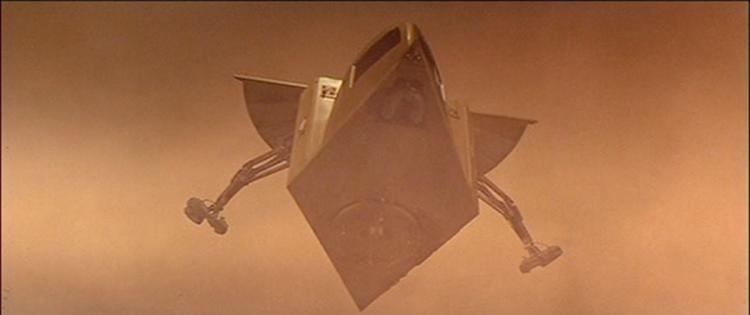
Garrett: Ornithopters are complicated. They have a lot of moving parts, and moving parts break. Especially in the desert where the wind blows abrasive sand into fine cavities of machinery, grinding them to bits. It actually makes sense to have a flying vehicle that doesn’t rely on large moving parts in order to function. See, the filmmakers knew what they were doing. It wasn’t just a matter of not having enough time and money to finish the special effects….
Jordan: Call me crazy, but I have something of a soft spot for the clunky, boxy vehicles in Lynch’s Dune film. Sure they don’t come close to matching things in the book, and look ridiculously impractical…But it still feels uniquely 80s Sci-Fi.
- Once Paul and Jessica escape into the desert, no one comes after them.
Garrett: The Harkonnens had more important things to do. Or else they were held back by the ghost of Duncan Idaho.
Jordan: Boy, it’s a good thing no one followed Paul and Jessica into the desert in this film. Without Duncan there to rescue them, they would have been screwed. Again, it’s a solid way to streamline the story and push things heedlessly forward.
- In the book, Paul and Jessica are rescued by Kynes and Duncan Idaho.
Garrett: The movie didn’t want anyone to have to rescue Paul. He has to show off how awesome he is.
Jordan: Considering that Lynch’s version of Dune has Paul going completely super/meta-human, this is a decision that makes more sense than some others. It lets Paul be a badass AND keeps the story from slowing down.
- …which is interesting because Kynes is the leader of the Fremen, and this begins the bond between the Fremen and Paul when Paul pledges his life to Kynes.
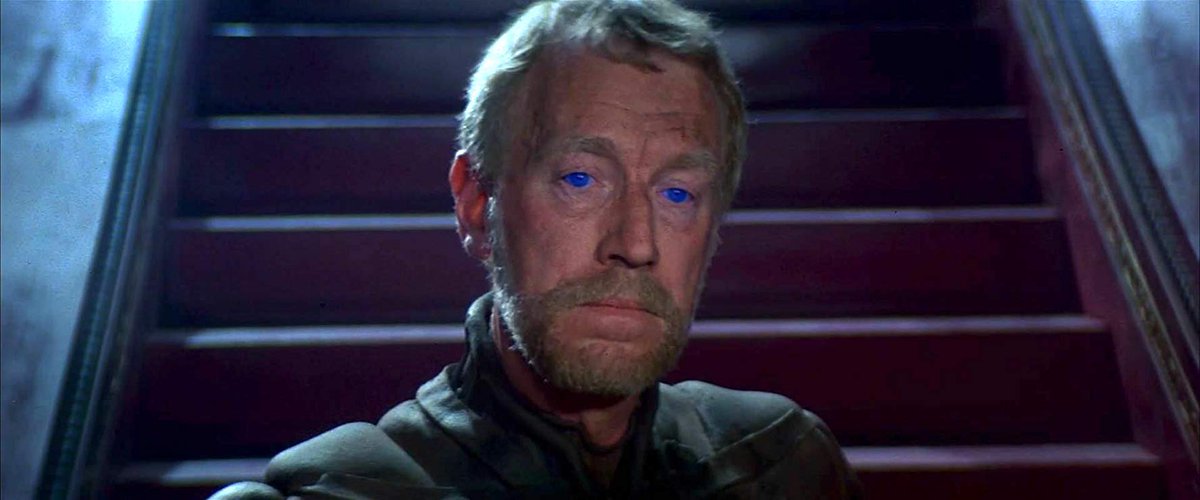
Garrett: Paul’s bond with the Fremen begins when they lay eyes on him. He didn’t need any additional help to convince them.
Jordan: When you forego all the subtext, and “wheels within wheels’ machinations that make the novel so compelling, so many of the choices made in the film begin to make sense. It’s not really Dune, so much as it is Paul’s superhero origin story.
- And one of the most important moments in the Dune series is when Duncan Idaho dies fighting off the Sardaukar to allow Paul and Jessica to escape. The useless Idaho in the movie already died ages ago.
Garrett: Well, Idaho still died. So at least they didn’t mess that part up. But it would have been kinda cool if they would have…
Jordan: Technically speaking, Idaho still dies defending House Atreides, but his sacrifice has nothing to do with directly helping Paul and Jessica escape. So I guess it’s a good thing they never tried to make him a more important character.

